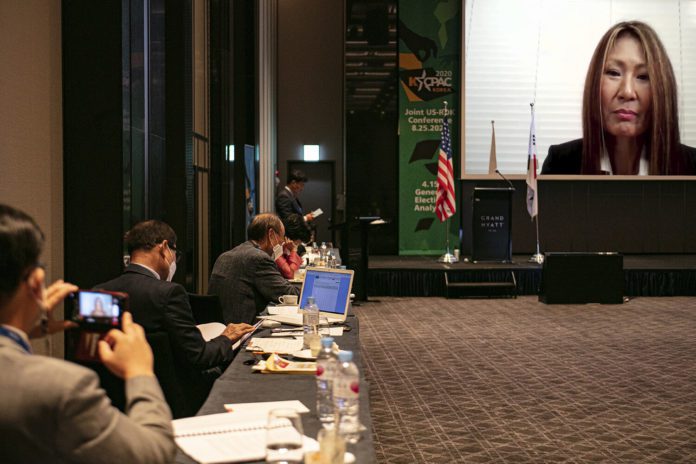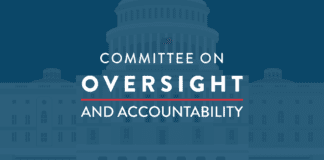It’s good to be at this conference virtually to talk to you about election fraud. Before I begin, I’d like to thank KCPAC for sponsoring the event and for inviting me.
As some of you know, I’ve written about election fraud in South Korea. Let me repeat why this issue is so important. In a liberal democracy and a republic, such as the Republic of Korea, the citizens temporarily lend their sovereignty to elected representatives. They do this through the election process. The election process, therefore, needs to be transparent and trustworthy in order for the outcome to reflect the people’s will. If the voters have doubts about the process and don’t trust the outcome, then steps must be taken to restore trust, because if the outcome does not reflect the voters’ will, then it’s not a representative government.
In South Korea’s general election of April 15, 2020, the official outcome was 180 seats for the Democratic Party of Korea & its satellite party. This is shocking. 180 of 300 is 60%, which allows the ruling party to pass practically any law it wants, without consulting the opposition parties.
So let’s look at why people are saying fraudulent elections occurred. There is a long list, but I’ll cover only a portion.
Let me begin with Professor Walter Mebane’s statistical analysis of the election data using his eForensics Model, which he has used for a large number of elections all around the world. He revised it several times with more robust data from the National Election Commission, but each time, it just confirmed that fraud occurred. His model showed that 1,418,079 votes were fraudulent. Of those, ~1.06 million votes were manufactured, and ~360,000 were stolen from other candidates.
His model also revealed that, in certain districts, the fraudulently winning party was Deobureo Minjoo Party (Democratic Party of Korea), and in some other districts, the fraudulently winning party was the United Future Party. So this is not a Left or Right issue. It’s an issue for all South Korean citizens.
This ties into the discovery that there were more votes casted than the number of registered voters in Korea. This alone should be enough evidence to throw out the election results and require a new election, but it didn’t occur.
There was a recount in one precinct in the entire country, but it was because of another reason. It was in Buyeo City. The vigilant citizens monitoring at the polling station couldn’t believe the results. They demanded a recount on the spot. The vote tallying machine was restarted, and the votes were recounted. And there was a big difference. Initially, Deobureo Minjoo Party had 180 votes, and the United Future Party had 80 votes. So the DP had more than twice the votes. After the recount, the UFP was actually ahead. It was 170 for the UFP, and 159 for DP. Even the vote total was different. Initially, the total was 260, after the recount, the total increased to 329. So did restarting the machine delete faulty or malicious software installed on the machine? Was the recount any more accurate?
Buyeo City, Initial vote count:
Democratic Party of Korea (Deobureo Minjoo Party): 180
United Future Party: 80
Total: 260
Buyeo City, After rebooting the machine and recounting:
Deobureo Minjoo Party: 159
United Future Party: 170
Total: 329
There’s a video showing a vote counting machine system at a polling station. It has 4 open USB ports, and a USB mouse was plugged into it. USB ports are serious security vulnerabilities. Hacking devices can be plugged in and take over a computer in seconds. These hacking devices can look like USB thumb drives, phone cables, keyboards, or computer mice.
That brings the next question. Did the vote counting machines have communications capability? The National Election Commission (NEC) stipulated that vote counting machines should not have the ability to communicate. But was it the case? Each vote counting machine contained what looks like 2 consumer laptops, inside presumably with wifi and bluetooth capability.
The problem of electronic vote rigging is that it’s not easily observable with human eyes. Often, it is not observable at all. So transparency is critical when using electronic means. The NEC should release the source code for these devices and provide diagrams and schematics. Moreover, voting results must be audited to ensure accuracy.
If the machines weren’t enough of a problem, the election network utilized Huawei equipment. The NEC selected LG U+ 5G to provide wifi for the voting stations. The LG U+ 5G uses Huawei equipment, which creates serious security concerns about the Chinese Communist Party (CCP) accessing and manipulating the data and the network, and using them for nefarious purposes. So this opens the door for CCP interference in South Korean elections.
Additionally, there were Chinese working at some of the polling stations
China has been trying to exert influence over politics and politicians in different countries—the U.S., Canada, and Europe. In Taiwan, the CCP’s attempt to influence the elections backfired. China’s intention to influence other countries is clear. Why would CCP exempt South Korea from its influence attempts?
The intention is there. The capability is there.
What steps has the NEC taken to address these cyber vulnerabilities and concerns? None. The organization which is supposed to ensure that the voting process is transparent, secure, and trustworthy hasn’t taken steps to identify the vulnerabilities and address them. That is a problem in itself.
There is evidence of unmarked ballots that were ran through a vote counting machine and counted toward the ruling party candidate, instead of being discarded. Prof. Mebane’s report mentioned over 1,000,000 “manufactured votes.” These are some of them.
CC cameras were not installed in pre-vote ballot storage areas to prevent tampering, despite voters’ requests. Why would the NEC deny measures that would enhance security and legitimacy?
Pre-vote ballots were stored in duffle bags inside a gym, instead of in a properly secured and monitored storage areas.
Early vote/mail-in vote ballots were transported in open plastic baskets, rather than locked, sealed containers.
The ballots had uneven margins and lacked anti-counterfeiting measures.
The courts and the prosecutors are behaving oddly as well. In fact, they are not taking any action on over 100 election fraud cases filed. They denied the requests to preserve electronic evidence.
What should be done?
In Bolivia, the international inspection team began to investigate only 10 days after the election. In SK, it has been months! What should have occurred is:
Revalidation and recount. But in SK’s case, with over 1,000,000 fraudulent votes, the results should be nullified
During a new election, hand count the votes, like Taiwan did. They had one person pick up one ballot, hand over the same ballot to the 2nd person, who read it outloud while holding it up for the citizen observers to see, and handed it to a 3rd person, who checked again and stacked. The 4th person put the tally on the board on the wall. All this was recorded on put on YouTube. That’s transparency.
Make public the source code used in the software for the early-vote operations as well as the schematics and details of voting machine hardware.
Remove USB ports from the machine and what looks like commercial off the shelf computers that were part of the voting machines.
Implement strong chain of custody procedures and anti-counterfeit measures from the production of ballots through storage after the election.
Investigations must occur.
The NEC should change its culture—from secrecy to transparency, from disrespecting citizens and treating them like criminals, to one that is accountable to the citizens. One that works for the citizens.
Free and fair elections is one of the pillars of liberal democracy. So it’s important to restore the confidence in the election system, if South Korea is to remain a free democracy.



